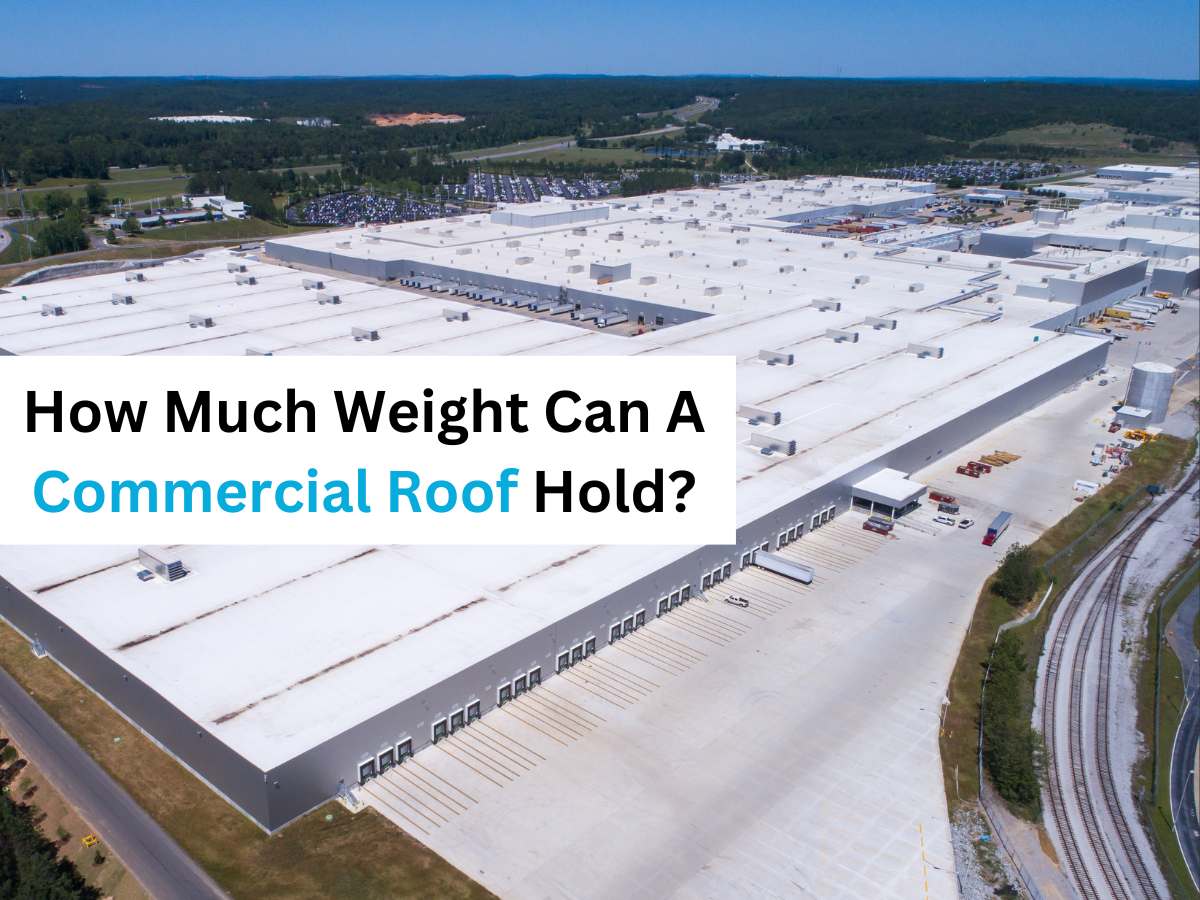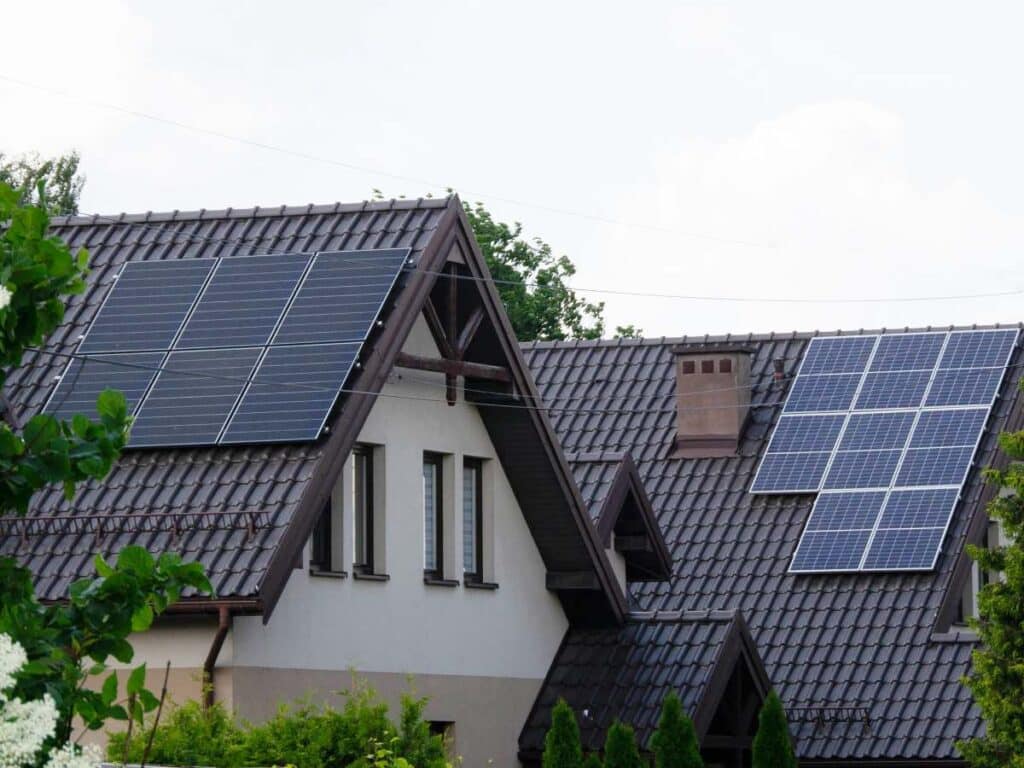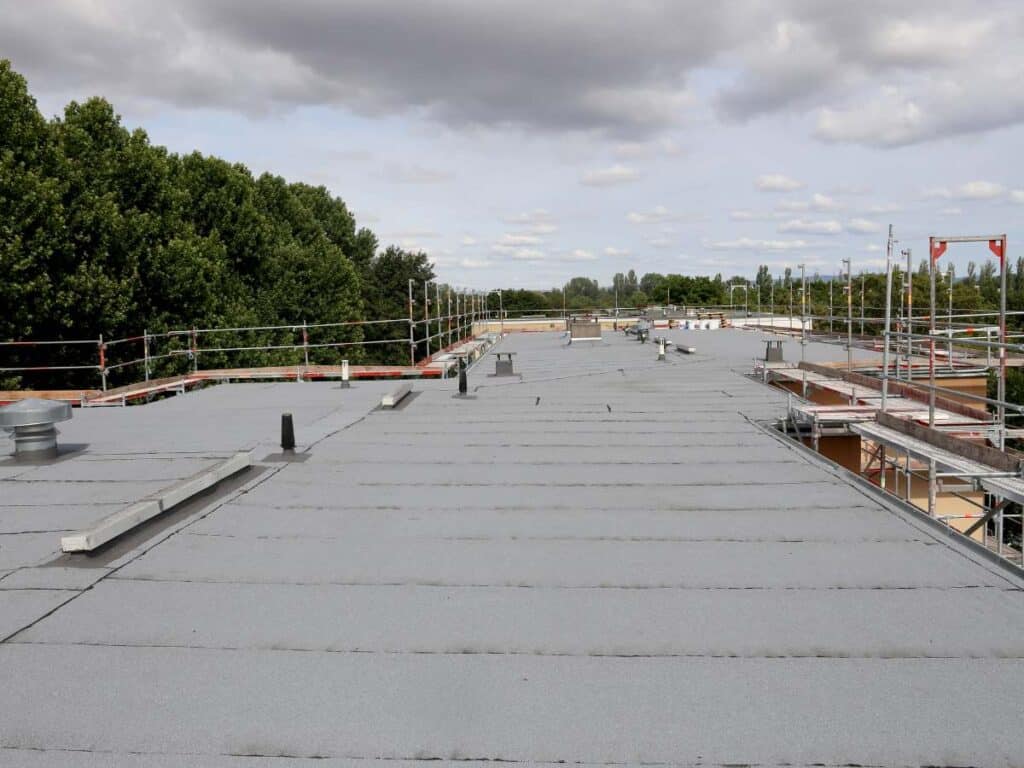
To receive your discount please fill in your details below.
It warms our hearts to see our valued HEROES being taken care off.





A commercial roof’s weight capacity varies by material and external factors. Shingle roofs support about 20 pounds per square foot, tile or metal roofs around 27 pounds, and flat roofs up to 100 pounds per square foot.
Varun Chandra – Director Holymess Repairs
The amount of weight a roof can hold is a very important aspect to consider during construction.
A properly done roof can prevent accidents like this one that occured in Anchorage when the commercial building couldn’t hold the weight of snow.
Most commercial roofs carry the weight of heating systems, vents and other essential components. Some have helipads on top. All of these weights must be accounted for when building roofs.
To prevent accidents from occurring, you should know how much weight a commercial roof should hold. This will allow installing a roof that meets the correct rating during construction.
When it comes to commercial roofs, understanding how much weight they can support is crucial for safety and longevity.
Different roofing materials have different weights, known as “dead loads,” which are the weight of the roof structure itself without any additional external loads. Here’s a quick breakdown:
| Shingle Roofs | These are relatively lightweight, with a dead load of about 20 pounds per square foot. |
| Concrete, Metal, or Clay Tile Roofs | Heavier than shingle roofs, these materials typically add a dead load of around 27 pounds per square foot. |
| Flat Roofs | Designed to handle a lot more, flat roofs can support a hefty dead load of up to 100 pounds per square foot. These roofs often need to bear additional equipment like HVAC units, so they’re built to be sturdy. |
But it’s not just about the dead load. External conditions play a significant role in determining how much weight your roof can safely hold.
For instance, snow can add a substantial amount of weight. Even light snowfall can pile up to an average of 5 to 6 pounds per square foot, depending on the depth and moisture content.
Imagine a light snow covering your entire roof – that’s like adding another layer of shingles on top! And if you’re in an area prone to heavy snowfall, this can dramatically increase the load your roof needs to support.
To ensure your commercial roof is up to the task, it’s essential to know both the dead load of your roofing materials and the potential live loads from weather and other factors. This knowledge helps in making informed decisions about maintenance, repairs, and even upgrades to keep your building safe and secure.
Commercial roofs come in different designs and types. However, most are flat. Commercial roofs are designed to bear the following kinds of weights:
These are weights or loads that come and go. They include people walking around on the roof, furniture or anything that’s stored there temporarily.
These are loads that are left on the roof after construction. They can be taken off at any time and do not constitute permanent loads.

These are loads, weights that are permanently attached or are on the roof. They include the ceiling material, HVAC and other components that are never coming off again.
Weights donated by nature constitute environmental weights. They include rainwater and snow. Of these two, snow is the most prevalent extra weight a commercial roof can be plagued with. If your roof is not designed to bear all the weight, this can lead to problems for your roof.
Commercial roofs are made of different materials, and each of these materials can bear different amounts of weight.

The load-bearing capacity of a flat roof, depends on several factors, including the roof’s size, building materials, and roofing system.
While flat roofs are generally designed to support at least 20 pounds per square foot, this limit can be exceeded by the accumulation of snow, rain, or debris.
Flat roof owners should be vigilant about snow accumulation and consider snow removal when necessary.
Flat roofs also have a concentrated load capacity, which is the maximum weight a specific point on the structure can bear. In Ontario, this is approximately 1.3 kN or around 300 pounds.
Commercial roofs and residential roofs are not constructed the same way. Both exhibit the same major signs of wear, however.
Regular maintenance is essential for roofs to keep on holding up and to prevent accidents. But all too often, even a properly constructed roof can begin to show signs that it’s tired of bearing all the weight you put on it.
Here are the signs a commercial roof may be carrying too much weight:
Obvious sagging in sections of the roof with excess weight is an indication that there’s a problem with your roof. This is usually the case for flat roofs where the owners have stored heavy equipment.
Additionally, fluctuating temperatures can cause the roofing material to expand or contract, leading to a redistribution of weight across the roof.
In extreme cases, walls communicate the trouble going on in the roof of a building. If there’s been a redistribution of weight from the roof into the walls and foundation, it produces weird creaking, cracking sounds.
If this happens with your roof, contact our commercial roofing contractors in Melbourne for help and we will give the delicate situation the attention it deserves.

Commercial roofs with flat tops often experience leaks when gutters become clogged and rainwater pools on the surface. Moisture can drain through the cracks and cause leaking. Leaks can also cause sagging in the roof, making it dangerous to walk on the surface.
Roofs must meet the minimum requirement of supporting a concentrated weight of 300 pounds. This means the load is applied to a single point on the roof.
For commercial flat roofs, a reasonable estimate is that they should be able to support a 300-pound HVAC unit within a 2.5×2.5-foot area.
Roof load capacity refers to the maximum weight a roof can bear without risking collapse or structural damage.
This load includes the weight of roofing materials, insulation, and any additional weight from equipment, people, or accumulated snow and water
Many roofs can typically support around 20 pounds per square foot, though some roofs can handle more weight. For instance, a roof with a rooftop deck is designed to support up to 55 pounds per square foot.
Steel roofing is the most commonly used metal roofing material for commercial buildings. It is made from galvanized steel that has been hot-dipped or coated with zinc. While steel is more affordable, it is just as effective and efficient as other metal roofing options.
Keeping roofs in top form can have a lasting impact on building efficiency. If the roof is weak, it doesn’t take long before the whole building begins to show certain weakness. Detecting the weakness in the roof early enough can prevent unnecessary costs.
If you notice leaks or other roof issues, avoid going up a commercial roof by yourself, unless you’re a professional.



